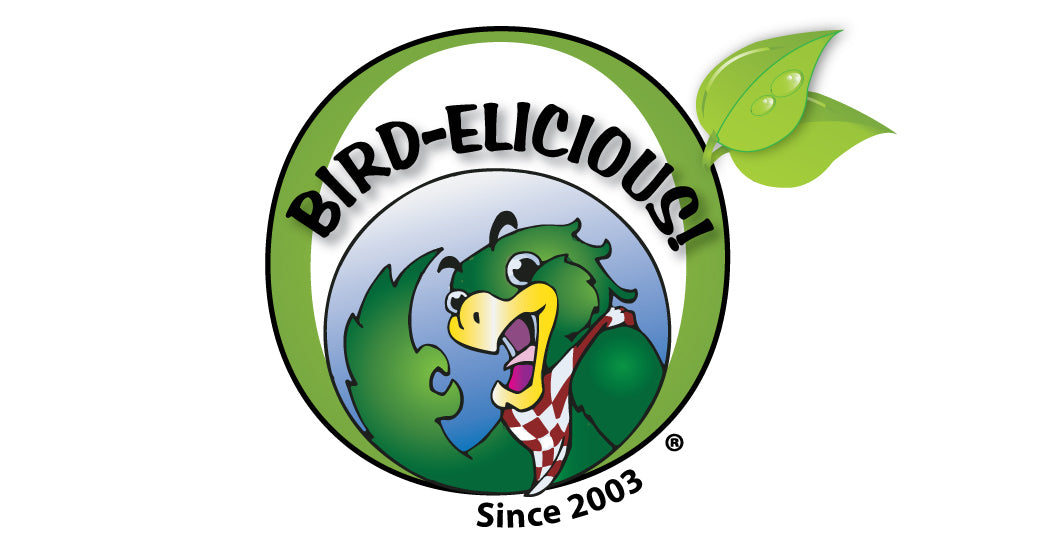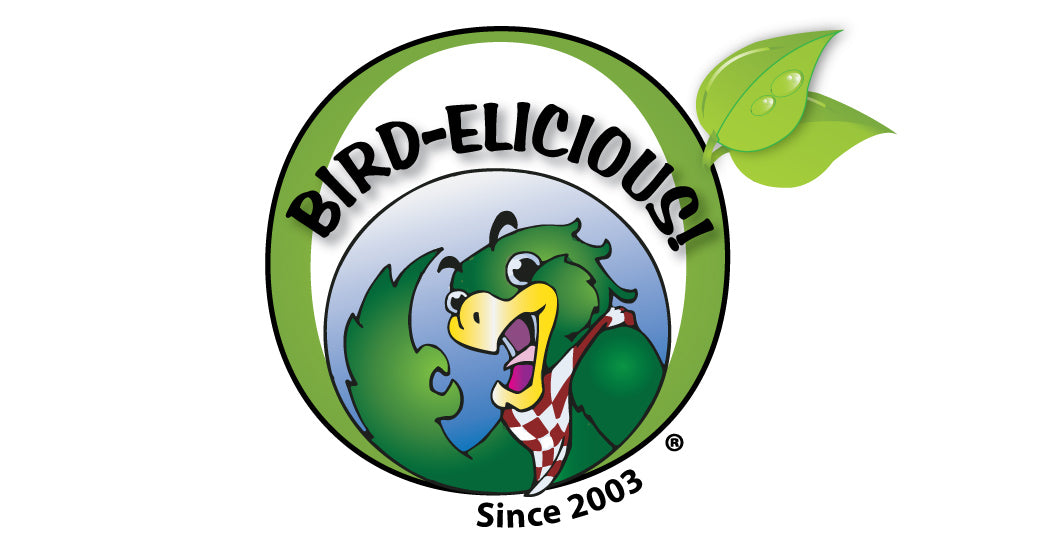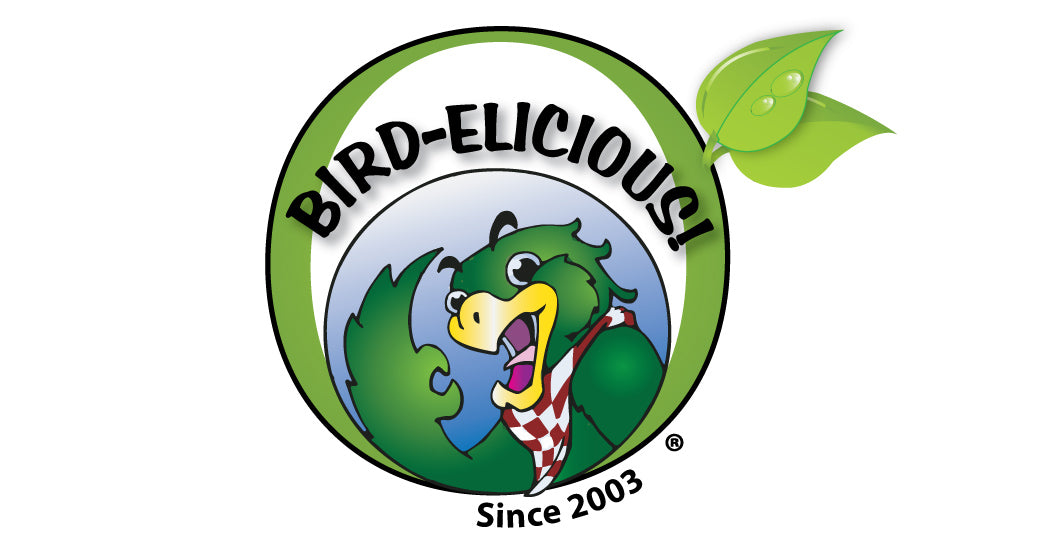Not many of us give much thought to dietary B12 in our birds' diets, but should we be thinking about this? Oh yes, very definitely yes!
B12 is not a vitamin found easily in plant matter; normally it must be synthesized in vivo, endogenously (within the living being). It is scientific fact that most living creatures, humans included have what is known as the "intrinsic factor" in order to synthesize B12 within the digestive tract. It is believed that birds may not have this factor due to the fact they are not mammals. (1)
The intrinsic factor is a glycoprotein secreted by the gastric mucosa of humans and ruminant animals. Absorption begins with a deposit of B12 into the duodenum, reabsorbed by the ileum and then completed with passage through the intestinal wall with help by various proteins and other endocrine co-factors. Pernicious anemia, pancreatic disorders, thyroid issues and more can be the result if the intrinsic factor is not properly functioning in mammals and Vitamin B12 is not present in the system. The base nutrient in Vitamin B12 is the mineral "cobalt". If this mineral is not present in the diet of mammals, anemia and other illnesses are likely to result. Birds are not mammals, they are a very special class of aves. Cobalt may or may not be important in the diets of exotic birds. The synthesis of B12 in birds is not yet completely understood, but a few properties of metabolism in birds are understood as well as the fact that Vitamin B12 is required in order for birds to maintain optimum health.
Just how do birds receive B12 from their diets and how do they metabolize it? What bodily functions is B12 necessary for in exotic birds? These are the questions I will attempt to answer in this short article.
B12 is actually considered a group of B vitamin compounds consisting of the empirical formula C63H88O14N14PCo. This empirical formula consists of naturally occurring cobalt, adenosylcobalamin, and methylcobalamin. Cyanocobalamin is not a naturally occurring form of B12, but it is the most widely used form of B12 in order to obtain B12 from an exogenous source (outside of a living creature). B12 is a water soluble vitamin meaning it does not require fat in the system to be metabolized. It is easily oxidized by light and oxygen, thus any source containing it should not be exposed to sunlight for any length of time or the activity of B12 will be lost. B12 is fairly temperature stable up to 250 degrees Fahrenheit. It is not the actual heat that destroys most vitamins, but the leaching out of the vitamins through the moisture excretion during the cooking process. Baking, steaming, frying and grilling will all cause moisture loss. Dehydration at low temperatures is the only known method of retaining most nutrients. Even freezing and thawing, as well as freeze-drying causes cell walls to burst allowing nutrient loss.
Malabsorption of B12
What is known about malabsorption of B12 in birds is the presence of gastric disorders. If such disorders are present B12 will not be properly absorbed or metabolized. Healthy gut bacteria needs to be present in order for fermentation to take place and B12 to be produced within the digestive tract. In addition if there is a deficiency of protein, iron* and Vitamin B6 then B12 cannot be produced. Furthermore thyroid function must be in good shape.
Here's where it gets super interesting; tannins and oxalates in our birds' foods.
If we are feeding foods containing high amounts of tannins and/or oxalates these naturally occurring "food chemicals" inhibit the absorption of B12 (and iron*) due to the fact that B12 has the base mineral element known as "cobalt." Tannins and oxalates always, always bind minerals preventing their absorption. So for those of you offering "teas" to your birds, or those of you feeding high oxalate foods, beware, any amount of B12 in your bird's diets are not being reliably absorbed! Oh no! And by the way, tannins are not removed by any appreciable amount by steeping, cooking or sprouting; they are in the foods and the moisture within those foods to stay! Tannins are not only found in tea, but many legumes as well. Oxalates can be reduced by sprouting or cooking; best reduced by boiling. Of course if you have been following my articles you realize by now that cooking totally destroys the foundational building blocks of food known as "digestive enzymes" which are absolutely crucial to our birds' health. In addition oxalates are "histamine liberators" so if you have a feather destroying bird those oxalates will contribute to picking, plucking and overall feather destruction and possibly self-mutilation.
What foods besides teas are high oxalate foods?
* Beet greens, cooked 1/2 cup - 916 mg
* Purslane, leaves, cooked 1/2 cup - 910 mg
* Rhubarb, stewed, no sugar 1/2 cup - 860 mg
* Spinach, cooked 1/2 cup - 750 mg
* Beets, cooked 1/2 cup - 675 mg
* Swiss Chard, leaves cooked 1/2 cup - 660 mg
* Rhubarb, canned 1/2 cup - 600 mg
* Spinach, frozen 1/2 cup - 600 mg
* Beets, pickled 1/2 cup - 500 mg
* Poke greens, cooked 1/2 cup - 476 mg
* Endive, raw 20 long leave -s 273 mg
* Dandelion greens, cooked 1/2 cup - 246 mg
* Okra, cooked 8-9 pods - 146 mg
* Potatoes, sweet, cooked 1/2 cup - 141 mg
* Kale, cooked 1/2 cup - 125 mg
* Peanuts, raw 1/3 cup (1-3/4 oz.) - 113 mg
* Turnip greens, cooked 1/2 cup - 110 mg
* Parsnips, diced, cooked 1/2 cup - 81 mg
* Collard greens, cooked 1/2 cup- 74 mg
* Pecans, halves, raw 1/3 cup (1-1/4 oz) - 74 mg
* Tea, leaves (4 mm. infusion) 1 level tsp in 7 oz water - 72 mg
* Wheat germ, toasted 1/4 cup - 67 mg
* Gooseberries 1/2 cup - 66 mg
* Potato, Idaho white, baked 1 medium - 64 mg
* Carrots, cooked 1/2 cup - 45 mg
(2)
You can read a list of foods containing high levels of tannins here: http://www.marfanlife.net/tannins/index.php?option=com_content&view=category&layout=blog&id=1&Itemid=2
I have not been able to find studies specifically performed on parrots regarding the effect of tannins on their digestive tract and the cascading effect on their overall systems. I was able to find information regarding studies performed on poultry and it doesn't look good for tannins. Evidently chickens do not have the ability to metabolize tannins. Intake of tannins causes depression in growth, decreased egg production and even death with only small percentages of tannins ingested. (3) From the literature I found while researching I repeatedly found that with the ingestion of tannins comes the inability to process and absorb dietary proteins lending to the above mentioned "growth depression." In addition it seems that tannins also inhibit the uptake of certain other nutrients like choline, manganese, biotin and more lending to "perosis" whereby some chicks are born with, or develop deformed legs and/or feet. (4) Maybe this partially answers our questions regarding "splayed" legs?
All of these issues surround the "Vitamin B12" discussion. If we wish to ensure that our birds are not only ingesting enough B12, but also absorbing and metabolizing the B12 they are ingesting we must be sure we are not including foodstuffs that are blocking or binding that absorption process.
Now, just how do we ensure our birds are receiving B12 in their basically herbivorous diets in the first place? This is, in fact the million dollar question when the majority of B12 is an animal-based nutrient. By the way, if your birds "eats its own poop", chances are your bird is seriously lacking B12 in its diet! This poop-eating engagement is known as "coprophagia" and almost all animals participate in this at one time or another in their lives. It is thought to be due to some kind of nutrient imbalance, vitamin or mineral, but most often due to a Vitamin B12 deficiency especially in animals who are fed high vegetarian diets.
My main go-to for all of the B vitamins is meal worms. Even fed dry they are a very good source of B vitamins, even B12. (5) Chlorella contains bio-available sources of active B12. (6) Many strains of barley grass contain bio-available B12. (7,8) Bio-available B12 can also be found in many varieties of mushrooms. (If you are concerned about the "hydrazines" in mushrooms, simply gently dehydrate mushrooms before feeding them to your birds to destroy this naturally occurring food constituent.) (9)
Why am I making such a big deal about Vitamin B12 in our birds' diets?
Vitamin B12 is one of those micronutrients that is absolutely essential for optimum health and vitality! Without adequate B12 our birds will begin to suffer "failure to thrive" and every system will sooner or later begin to falter. Yes, EVERY system.
As previously mentioned B12 is necessary for protein formation from amino acids, carbohydrate and fat metabolism, the regeneration of red blood cells, to maintain the nervous system, maintain an even energy level, proper brain function and correct cognitive ability and works in close connection with other B vitamins such as choline which cleanses the liver, folic acid to prevent anemia, and the amino acid methionine for the metabolism of dietary proteins. B12 also affects appetite control and balance by helping to maintain the integrity of digestive tract mucosa when working in tandem with the correct probiotic foods that build the gut flora.
I will reiterate, if we are feeding a high volume of foods that break down the mucosa, such as a high cellulose diet, or foods containing high amounts of tannins or oxalates, we are greatly reducing Vitamin B12 in our birds' diets. I cannot emphasize strongly enough how important it is to learn not only what foods to feed, but HOW TO COMBINE THOSE FOODS for maximum, quality nutrition so that all foods work in a complimentary manner with each other! Do you really want one food to cancel another nutrient completely out? I don't think so. We cannot simply just "throw in the kitchen sink" and think "There, now I have a large variety of ingredients; that should cover all of the nutrients my bird needs!" No, proper nutrition just doesn't work that way.
Ref: (1) https://www.dsm.com/markets/anh/en_US/Compendium/poultry/vitamin_B12.html; (2) http://www.childrensdayton.org/cms/resource_library/nephrology_files/5f5dec8807c77c52/lithiasis__oxalate_and_diet.pdf; (3) http://poisonousplants.ansci.cornell.edu/toxicagents/tannin.html; (4) http://medical-dictionary.thefreedictionary.com/perosis; (5) http://www.organicvaluerecovery.com/studies/studies_nutrient_content_of_insects.htm; (6) http://www.ncbi.nlm.nih.gov/pmc/articles/PMC4042564; (7) http://link.springer.com/article/10.1007%2FBF00007957; (8) http://www.ijnpnd.com/article.asp?issn=2231-0738;year=2011;volume=1;issue=1;spage=69;epage=72;aulast=Al-Razzuqi; (9) http://www.ncbi.nlm.nih.gov/pmc/articles/PMC4042564.
(c)2015.10.10 Machelle Pacion Passion Tree House LLC All Rights Reserved




Leave a comment (all fields required)